Home>Storage & Organization>Kitchen Organizing Tools>How To Dog-Proof A Litter Box
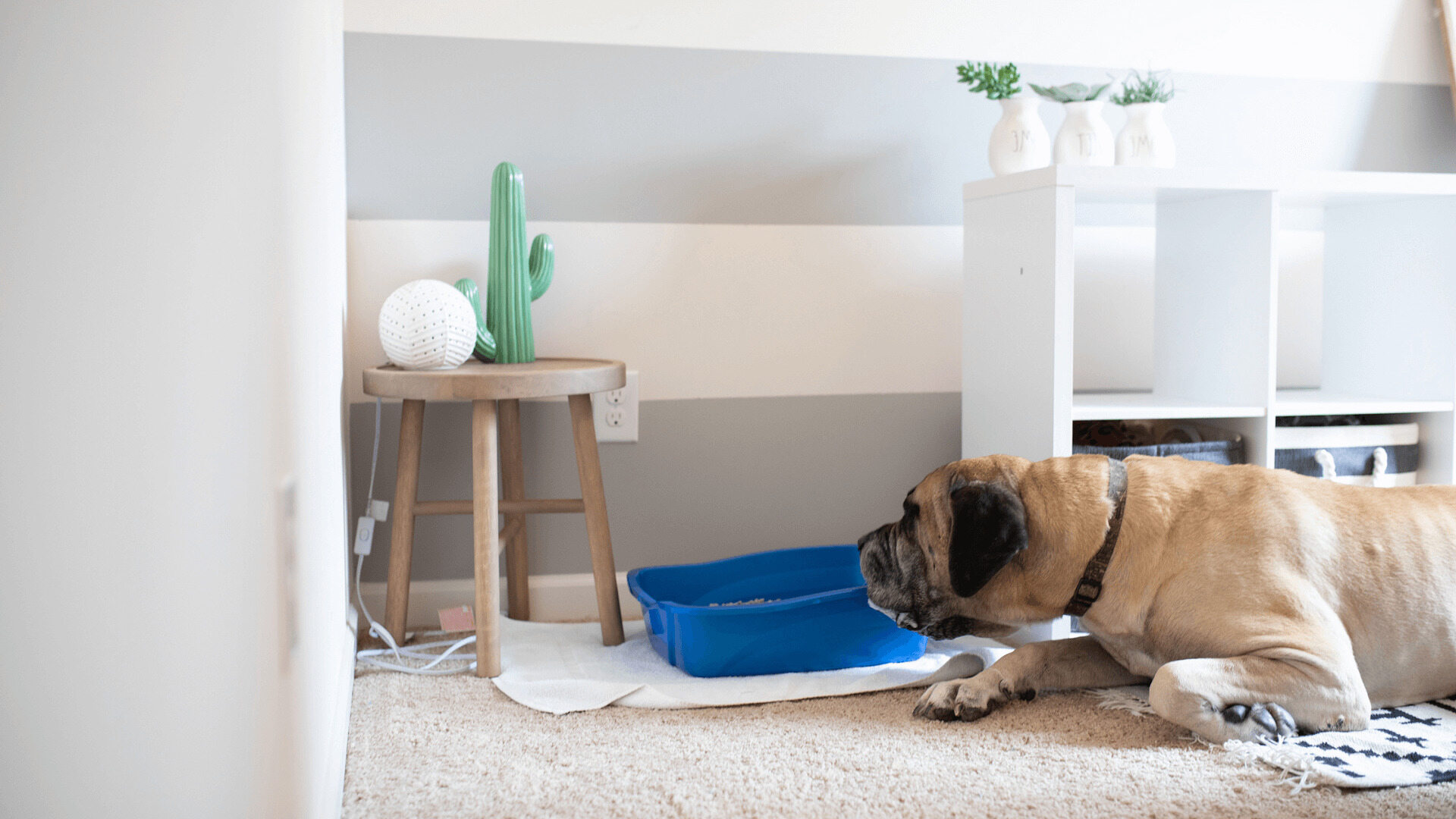

Kitchen Organizing Tools
How To Dog-Proof A Litter Box
Modified: August 24, 2024
Learn how to dog-proof your litter box with the best kitchen organizing tools. Keep your space tidy and your pets happy!
(Many of the links in this article redirect to a specific reviewed product. Your purchase of these products through affiliate links helps to generate commission for Storables.com, at no extra cost. Learn more)
Introduction
Keeping a tidy and organized kitchen is a goal for many, but it can be challenging when furry friends are part of the household. Dogs, with their curious nature, may see the litter box as an alluring buffet or a fascinating play area. This can lead to messy and unhygienic situations, much to the dismay of pet owners. However, with the right strategies and tools, it's possible to dog-proof a litter box and maintain a clean and harmonious living environment for both pets and their human companions.
In this comprehensive guide, we will delve into the various aspects of dog-proofing a litter box, offering practical tips and insights to address this common challenge. From selecting the appropriate litter box and choosing the right location to training your dog and implementing regular maintenance routines, we will explore the key steps to effectively manage this issue. By understanding the problem and implementing the recommended solutions, pet owners can create a peaceful coexistence between their dogs and the litter box, ensuring a clean and inviting kitchen space for all inhabitants.
Let's embark on this journey to discover the best practices and tools for dog-proofing a litter box, empowering pet owners with the knowledge and resources to overcome this common household dilemma.
Key Takeaways:
- Keep your kitchen clean and your pets happy by choosing the right litter box, placing it strategically, and using dog-proofing tools like enclosures. With some training and regular maintenance, you can create a harmonious environment for all your furry friends.
- Select the right litter, use dog-proofing tools, and train your dog to respect boundaries around the litter box. By maintaining a clean and inviting space, you can ensure a peaceful coexistence between your pets and a hygienic kitchen environment.
Read more: How To Train A Dog To Use A Litter Box
Understanding the Problem
The presence of dogs and litter boxes in the same household can pose a unique set of challenges for pet owners. Dogs are naturally curious and may view the litter box as an intriguing source of exploration, play, or even an unexpected snack. This behavior can lead to a range of undesirable outcomes, including scattered litter, unsanitary conditions, and potential health risks for both pets and humans. Understanding the root of the problem is crucial in devising effective strategies to dog-proof the litter box and maintain a hygienic kitchen environment.
One of the primary concerns associated with dogs and litter boxes is the potential for mess and disarray. Dogs, driven by their inquisitive nature, may attempt to investigate or interact with the litter box, leading to scattered litter and a general lack of cleanliness in the surrounding area. This not only creates an unsightly mess but also poses hygiene issues, as the litter may contain waste materials that can be inadvertently spread around the kitchen.
Furthermore, the presence of dogs near the litter box can result in the ingestion of litter or waste, which can have adverse effects on their health. Ingesting litter or waste materials can lead to digestive discomfort, potential toxicity, and the spread of harmful bacteria. Additionally, the unsanitary conditions that arise from dogs interacting with the litter box can pose health risks to both pets and their human companions, making it essential to address this issue effectively.
Moreover, the psychological impact of dogs engaging with the litter box should not be overlooked. For some dogs, the litter box may become a source of stress or anxiety, especially if they perceive it as a territory to be guarded or a potential source of conflict with other pets in the household. This can lead to behavioral issues and tension among pets, disrupting the overall harmony within the home.
By comprehensively understanding the challenges associated with dogs and litter boxes, pet owners can proactively implement measures to mitigate these issues. Through thoughtful consideration and strategic interventions, it is possible to create a harmonious living environment where dogs and litter boxes coexist peacefully, ensuring a clean and hygienic kitchen space for all inhabitants.
Choosing the Right Litter Box
Selecting the appropriate litter box is a pivotal step in dog-proofing the kitchen and ensuring a clean and hygienic environment for both pets and their human companions. When choosing a litter box that is compatible with a multi-pet household, particularly one that includes dogs, several key factors should be taken into consideration.
Size and Accessibility
The size of the litter box is a crucial consideration, especially when accommodating both cats and dogs. Opting for a larger litter box provides ample space for cats to maneuver comfortably while minimizing the likelihood of spillage or scattering. Additionally, a larger litter box can serve as a deterrent for dogs, as it may be less inviting for them to investigate or interact with.
Covered or Top-Entry Litter Boxes
In households with dogs, covered or top-entry litter boxes can offer an effective solution. These designs feature an enclosed space that provides cats with privacy while deterring dogs from accessing the litter. The cover or top-entry design restricts a dog's ability to reach the litter, reducing the likelihood of unwanted interactions and maintaining a cleaner environment.
Read more: How Deep Should Litter Be In A Litter Box
High-Sided Litter Boxes
High-sided litter boxes are another viable option for dog-proofing the litter box area. The elevated walls act as a barrier, preventing dogs from accessing the litter while allowing cats to enter and exit comfortably. This design minimizes the risk of litter spillage caused by dogs and provides a secure and inviting space for cats to fulfill their toileting needs.
Location-Specific Litter Boxes
Strategic placement of the litter box can also contribute to dog-proofing efforts. Placing the litter box in a location that is easily accessible to cats but less so to dogs can help mitigate unwanted interactions. Elevated or enclosed spaces, such as shelves or dedicated cat furniture, can serve as ideal locations for the litter box, ensuring that it remains within the cats' domain while being less accessible to dogs.
By carefully considering these factors and selecting a litter box that aligns with the unique dynamics of a multi-pet household, pet owners can effectively mitigate the challenges associated with dogs and litter boxes. Choosing the right litter box sets the foundation for a harmonious coexistence between pets, fostering a clean and inviting kitchen environment for all inhabitants.
Placement of the Litter Box
Strategic placement of the litter box is a crucial aspect of dog-proofing efforts in a multi-pet household. By thoughtfully selecting the location for the litter box, pet owners can create a designated space that caters to the needs of their feline companions while minimizing the likelihood of unwanted interactions with dogs. Consider the following factors when determining the optimal placement for the litter box:
Accessibility for Cats
The primary consideration when placing the litter box is ensuring that it remains easily accessible to cats. Cats value privacy and a sense of security when using the litter box, so it's essential to position it in a quiet and relatively secluded area. This allows cats to fulfill their toileting needs without feeling vulnerable or disrupted by the presence of other pets.
Read more: How Much Litter To Put In A Litter Box
Inaccessible to Dogs
To dog-proof the litter box, it's important to position it in a location that is less accessible to dogs. Elevated spaces, such as shelves or dedicated cat furniture, can serve as ideal placements for the litter box. These elevated locations provide cats with a sense of security and privacy while deterring dogs from reaching the litter box. Additionally, choosing a location that is not easily accessible to dogs can help minimize the likelihood of unwanted interactions and maintain a cleaner environment.
Consideration of Traffic Patterns
Observing the typical traffic patterns within the household is essential when determining the placement of the litter box. Placing it in an area with minimal foot traffic and noise can help create a tranquil environment for cats to use the litter box comfortably. Additionally, positioning the litter box away from high-traffic areas can reduce the likelihood of dogs encountering it during their daily activities, further contributing to dog-proofing efforts.
Multiple Litter Boxes
In households with both cats and dogs, having multiple litter boxes strategically placed throughout the living space can be beneficial. This not only provides cats with convenient access to toileting facilities but also reduces the likelihood of competition or conflicts over a single litter box. By offering multiple options, pet owners can cater to the individual preferences of their feline companions while minimizing the potential for unwanted interactions with dogs.
By carefully considering these factors and strategically placing the litter box in a manner that prioritizes the needs of cats while minimizing the accessibility to dogs, pet owners can effectively dog-proof the litter box area. Thoughtful placement contributes to a harmonious coexistence between pets, fostering a clean and inviting kitchen environment for all inhabitants.
Choosing the Right Litter
Selecting the appropriate litter is a critical consideration when dog-proofing the litter box and maintaining a clean and hygienic environment for both pets and their human companions. The choice of litter not only impacts the overall cleanliness of the kitchen space but also plays a significant role in addressing the specific needs of cats while deterring unwanted interactions from dogs.
Clumping vs. Non-Clumping Litter
When choosing litter for a multi-pet household, particularly one that includes dogs, pet owners often face the decision between clumping and non-clumping varieties. Clumping litter forms solid masses when in contact with moisture, making it easier to remove soiled portions and maintain a cleaner litter box. This type of litter is favored for its convenience and odor-controlling properties. However, in households with dogs, it's essential to consider the potential ingestion of clumping litter by dogs, which can pose health risks. Non-clumping litter, while requiring more frequent complete changes, may be a safer option in multi-pet environments.
Dust-Free and Low-Tracking Formulas
Opting for dust-free litter can contribute to a cleaner and healthier environment for both pets and their human companions. Dust particles from litter can pose respiratory concerns for pets and may contribute to a dusty kitchen space. Additionally, selecting a low-tracking formula can help minimize the spread of litter particles outside the litter box area, reducing the need for frequent cleaning and maintenance.
Natural and Unscented Options
Choosing natural and unscented litter options can benefit both cats and dogs in a multi-pet household. Natural litters, such as those made from biodegradable materials like corn, wheat, or pine, offer an eco-friendly and pet-safe alternative to traditional clay-based litters. Unscented options are preferable as they minimize potential irritants for pets and ensure a neutral and non-intrusive odor profile in the kitchen space.
Consideration of Cat Preferences
Understanding the toileting preferences of cats is essential when selecting the right litter. Cats may have individual preferences for texture, scent, and absorbency, and accommodating these preferences can contribute to their comfort and satisfaction when using the litter box. By aligning the litter choice with the preferences of the feline companions, pet owners can promote consistent litter box usage and minimize potential stress or aversion related to the presence of dogs.
By carefully considering these factors and selecting a litter that aligns with the unique dynamics of a multi-pet household, pet owners can effectively mitigate the challenges associated with dogs and litter boxes. Choosing the right litter sets the foundation for a harmonious coexistence between pets, fostering a clean and inviting kitchen environment for all inhabitants.
Read more: How To Fill The Litter Box
Litter Box Enclosures
Litter box enclosures offer a practical and aesthetically pleasing solution to dog-proofing the litter box area while enhancing the overall ambiance of the kitchen space. These enclosures, also known as litter box furniture or cabinets, serve as discrete and functional units designed to house the litter box while providing cats with a private and secure toileting environment. When integrated into the kitchen layout, litter box enclosures offer several benefits that contribute to a harmonious coexistence between pets and their human companions.
Privacy and Seclusion
One of the primary advantages of litter box enclosures is the provision of privacy and seclusion for cats during their toileting activities. These enclosures feature enclosed compartments that shield the litter box from view, creating a designated space where cats can fulfill their needs without feeling exposed or vulnerable. This sense of privacy is particularly beneficial in multi-pet households, as it minimizes the likelihood of dogs attempting to access or interact with the litter box.
Odor Control and Aesthetic Appeal
Litter box enclosures are designed to contain odors and litter scatter, contributing to a fresher and more inviting kitchen environment. The enclosed nature of these units helps confine odors within the enclosure, preventing them from permeating the surrounding space. Additionally, many litter box enclosures are crafted with stylish and functional designs, seamlessly blending into the kitchen decor and serving as functional pieces of furniture. This dual functionality enhances the overall aesthetic appeal of the kitchen while effectively concealing the litter box.
Dog Deterrence
Integrating a litter box enclosure into the kitchen space serves as an effective deterrent for dogs seeking to interact with the litter box. The enclosed design restricts access to the litter box, minimizing the likelihood of dogs attempting to disturb or ingest the litter. This not only contributes to a cleaner and more hygienic environment but also reduces the potential health risks associated with dogs coming into contact with the litter box contents.
Read more: How To Move A Litter Box
Versatility and Customization
Litter box enclosures come in a variety of styles, sizes, and configurations, offering pet owners the flexibility to select an option that best suits their kitchen layout and the specific needs of their pets. From discreet cabinet-style enclosures to multifunctional furniture pieces, there are numerous options available to accommodate different preferences and spatial requirements. Additionally, some enclosures feature built-in entryways or cat-friendly access points, ensuring that cats can comfortably enter and exit the enclosure while maintaining their sense of security.
By incorporating a litter box enclosure into the kitchen space, pet owners can effectively dog-proof the litter box area while elevating the overall functionality and visual appeal of the environment. These enclosures provide a practical and stylish solution to the challenges associated with dogs and litter boxes, fostering a clean, inviting, and harmonious living space for all inhabitants.
Training Your Dog
Introducing structured training for your dog is a fundamental aspect of dog-proofing the litter box area and fostering a harmonious living environment for all pets. Through positive reinforcement and consistent guidance, pet owners can effectively communicate boundaries and expectations to their dogs, minimizing the likelihood of unwanted interactions with the litter box. Here are essential strategies for training your dog in the context of the litter box:
Positive Reinforcement
Utilize positive reinforcement techniques to encourage desirable behaviors around the litter box area. When your dog shows disinterest or refrains from approaching the litter box, offer verbal praise, treats, or favorite toys as rewards. By associating positive experiences with respecting the boundaries of the litter box, dogs can learn to exhibit appropriate behavior in the kitchen space.
Distraction and Redirecting
Implement distraction and redirection techniques to divert your dog's attention away from the litter box. Engage in interactive play, provide mental stimulation through toys or puzzles, or initiate obedience training exercises in proximity to the litter box area. Redirecting your dog's focus to alternative activities reinforces the idea that the litter box is off-limits, promoting a respectful and non-intrusive approach.
Read more: How To Hide A Litter Box
Consistent Boundaries
Establish and maintain consistent boundaries regarding access to the litter box area. Utilize physical barriers, such as baby gates or pet-specific enclosures, to delineate the space and prevent dogs from entering the vicinity of the litter box. By consistently reinforcing these boundaries, dogs learn to recognize and respect the designated areas within the kitchen environment.
Obedience Training
Incorporate obedience training exercises that reinforce impulse control and respectful behavior. Commands such as "leave it" and "stay" can be valuable tools in guiding your dog's conduct around the litter box. Through consistent training sessions, dogs develop the self-discipline to refrain from engaging with the litter box, contributing to a cleaner and more hygienic kitchen space.
Supervision and Monitoring
Maintain vigilant supervision and monitoring of your dog's interactions with the litter box area. By actively observing your dog's behavior and intervening when necessary, you can promptly address any attempts to approach or investigate the litter box. This proactive approach reinforces the boundaries and expectations established through training, fostering a respectful coexistence between dogs and the litter box.
By implementing these training strategies and consistently reinforcing positive behaviors, pet owners can effectively mitigate the challenges associated with dogs and litter boxes. Training your dog not only contributes to a cleaner and more hygienic kitchen environment but also promotes a harmonious and peaceful coexistence among all pets in the household.
Regular Maintenance
Regular maintenance of the litter box is essential for preserving a clean and hygienic kitchen environment while effectively dog-proofing the area. By implementing consistent maintenance routines, pet owners can ensure that the litter box remains a functional and inviting space for cats while minimizing the potential for unwanted interactions with dogs. Here are key practices for maintaining the litter box:
Read more: How To Make A Litter Box Enclosure
Daily Scooping and Waste Removal
Engaging in daily scooping and waste removal is a fundamental aspect of litter box maintenance. This routine involves promptly removing soiled litter and waste materials from the litter box, ensuring that it remains clean and odor-free. By promptly addressing waste accumulation, pet owners can prevent dogs from being attracted to the litter box and minimize the likelihood of unsanitary conditions.
Litter Replacement and Refilling
Regularly replacing and refilling the litter is essential for sustaining a fresh and inviting environment within the litter box. Depending on the type of litter used, pet owners should adhere to the recommended frequency of complete litter changes. Additionally, topping up the litter as needed helps maintain an adequate depth for effective waste absorption and odor control.
Cleaning and Sanitization
Periodic cleaning and sanitization of the litter box and its surrounding area are crucial for preventing the buildup of bacteria and odors. Using pet-safe cleaning products, thoroughly wash and disinfect the litter box to eliminate any residual odors and maintain a hygienic environment. Additionally, cleaning the surrounding floor or mat where litter may have scattered contributes to overall cleanliness.
Odor Control Measures
Incorporating odor control measures, such as the use of baking soda or specialized litter box deodorizers, can help manage and neutralize any lingering odors within the kitchen space. These measures contribute to a fresher and more pleasant environment, minimizing the impact of the litter box on the overall ambiance of the kitchen.
Read more: How To Clean A Litter Box With Vinegar
Monitoring and Observing Pet Behavior
Regularly monitoring and observing pet behavior around the litter box area is essential for identifying any potential issues or changes in habits. By staying attuned to the interactions of both cats and dogs with the litter box, pet owners can promptly address any concerns and adapt their maintenance routines as needed.
By adhering to these regular maintenance practices, pet owners can effectively uphold a clean and hygienic kitchen environment while mitigating the challenges associated with dogs and litter boxes. Consistent maintenance not only promotes the well-being of pets but also contributes to a harmonious coexistence within the household.
Conclusion
In conclusion, dog-proofing a litter box in a multi-pet household, particularly one that includes dogs and cats, requires a thoughtful and comprehensive approach. By understanding the unique challenges associated with dogs and litter boxes, pet owners can implement practical strategies to create a clean, hygienic, and harmonious living environment for all inhabitants.
The process begins with selecting the right litter box that caters to the specific needs of cats while deterring unwanted interactions from dogs. Factors such as size, accessibility, and design play a crucial role in ensuring that the litter box remains a welcoming space for cats while minimizing the likelihood of disturbances from dogs. Strategic placement of the litter box, consideration of traffic patterns, and the provision of multiple litter boxes further contribute to dog-proofing efforts.
Choosing the appropriate litter is equally essential, with a focus on factors such as clumping vs. non-clumping varieties, dust-free and low-tracking formulas, and natural, unscented options. Aligning the litter choice with the preferences of cats promotes consistent litter box usage and minimizes potential stress or aversion related to the presence of dogs.
Integrating litter box enclosures into the kitchen space offers a practical and aesthetically pleasing solution to dog-proofing the area. These enclosures provide privacy, odor control, and dog deterrence, enhancing the overall functionality and visual appeal of the kitchen environment.
Training dogs to respect boundaries around the litter box through positive reinforcement, distraction, consistent boundaries, and supervision is crucial for fostering a respectful coexistence. Additionally, regular maintenance practices, including daily scooping, litter replacement, cleaning, and odor control, contribute to a clean and inviting kitchen space.
By combining these strategies and practices, pet owners can effectively mitigate the challenges associated with dogs and litter boxes, creating a harmonious and hygienic living environment for all pets and their human companions. Through proactive measures and thoughtful considerations, a peaceful coexistence between dogs, cats, and the litter box can be achieved, ensuring a clean and inviting kitchen space for all inhabitants.
Frequently Asked Questions about How To Dog-Proof A Litter Box
Was this page helpful?
At Storables.com, we guarantee accurate and reliable information. Our content, validated by Expert Board Contributors, is crafted following stringent Editorial Policies. We're committed to providing you with well-researched, expert-backed insights for all your informational needs.

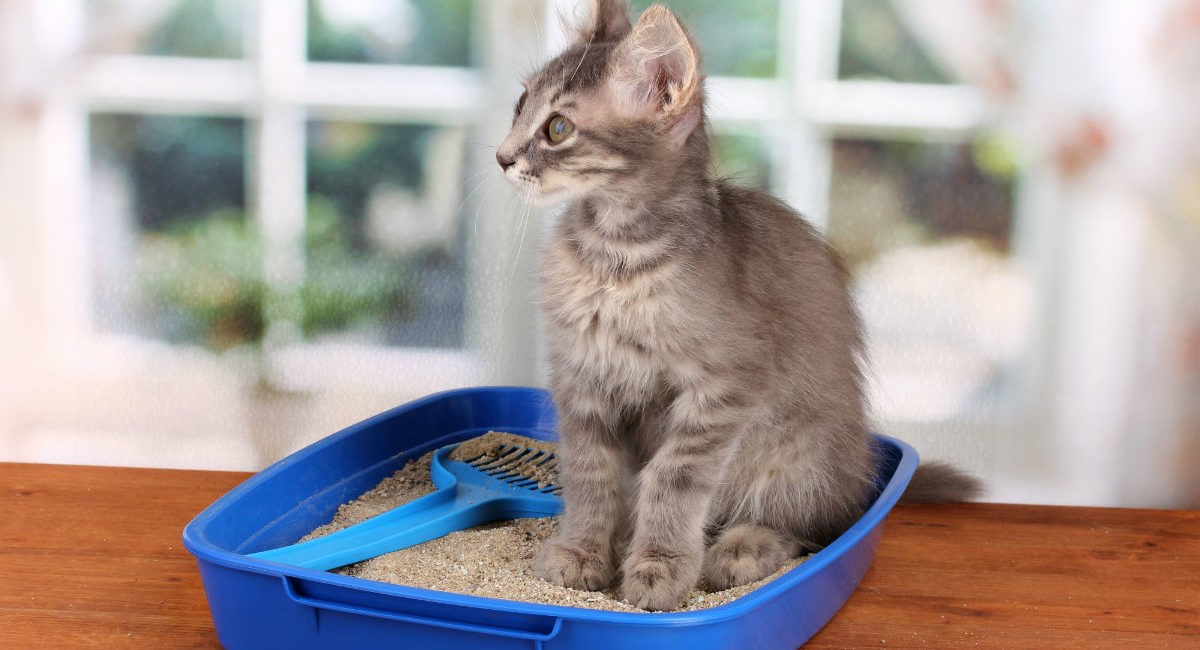
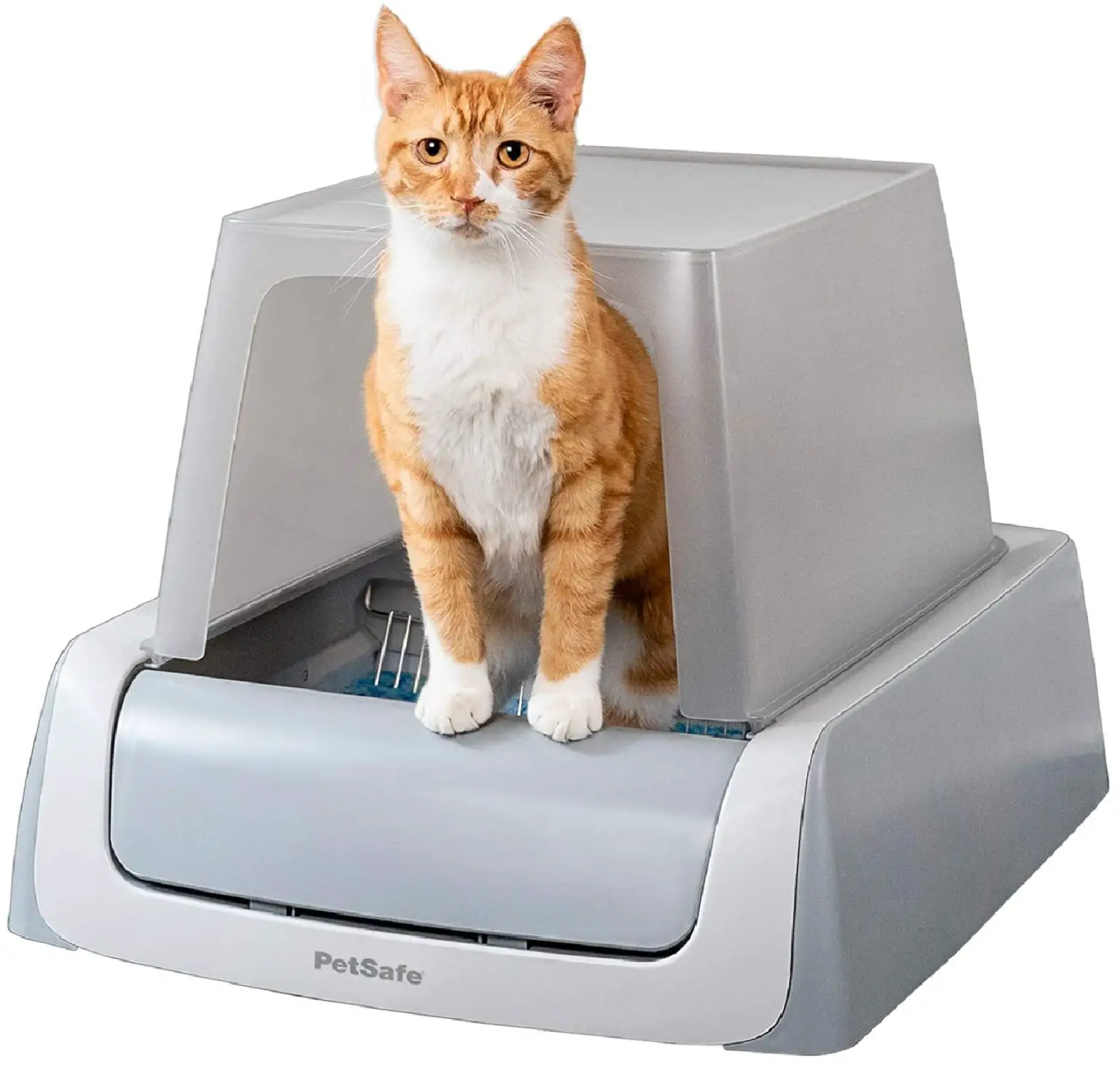
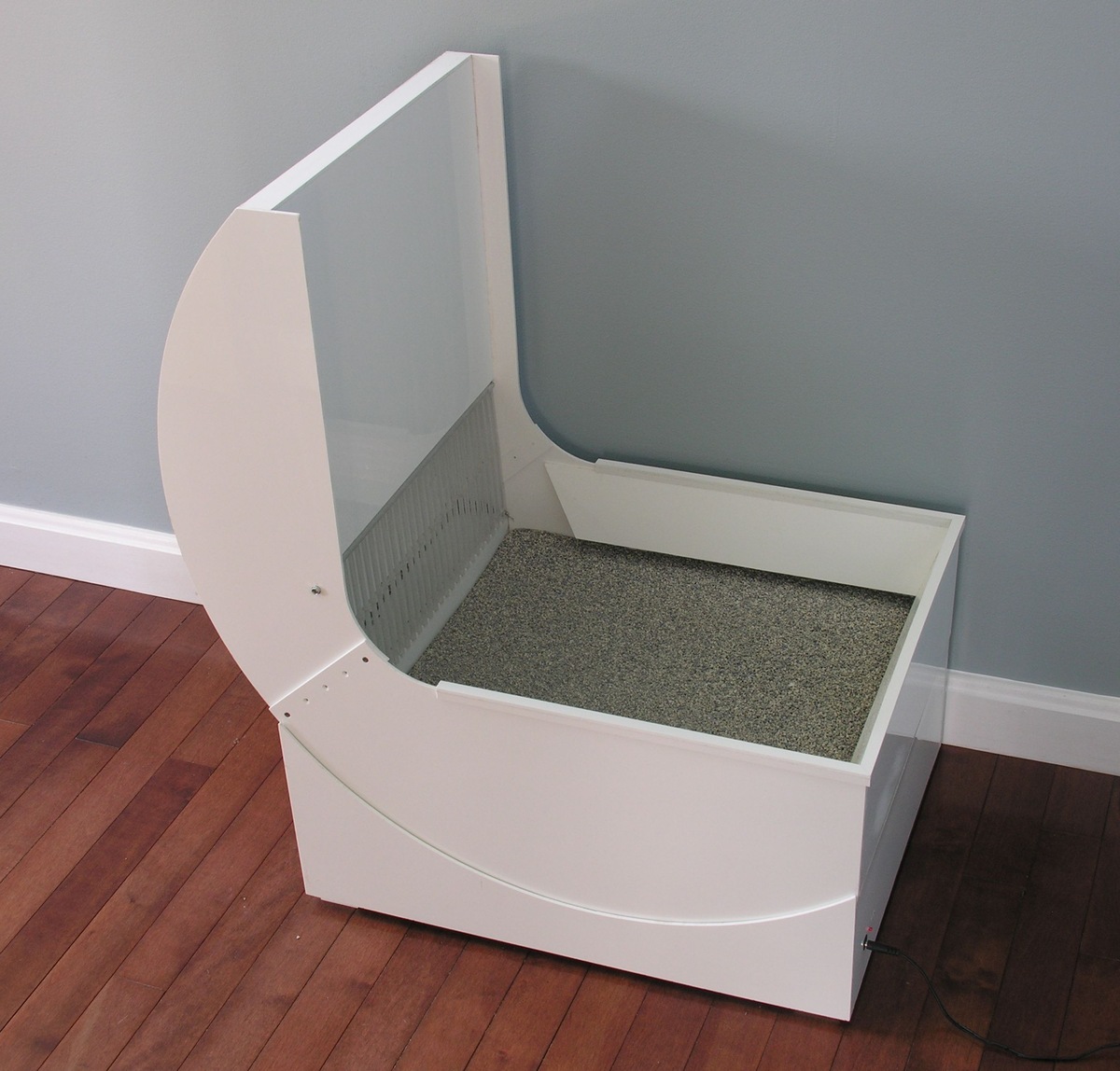
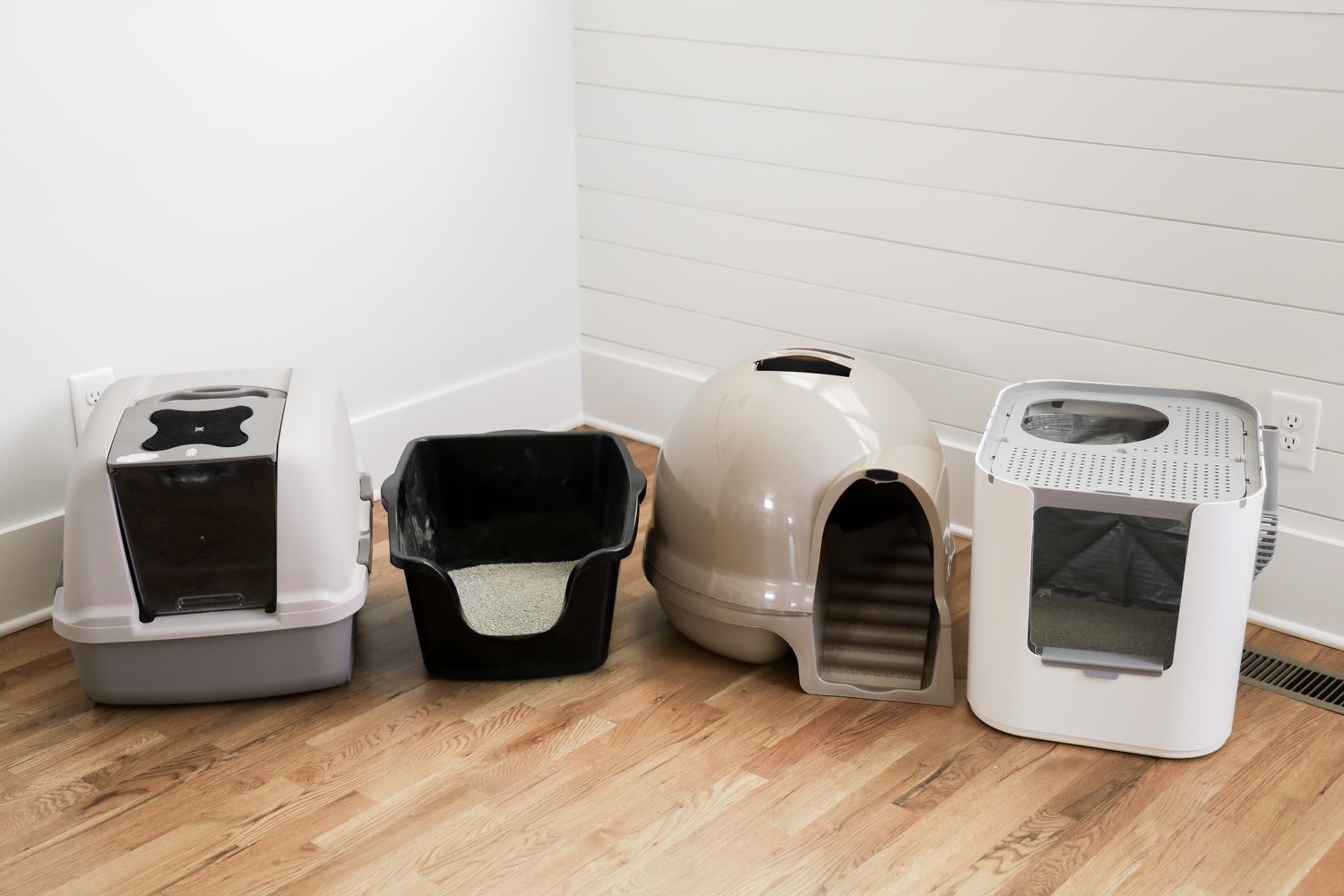
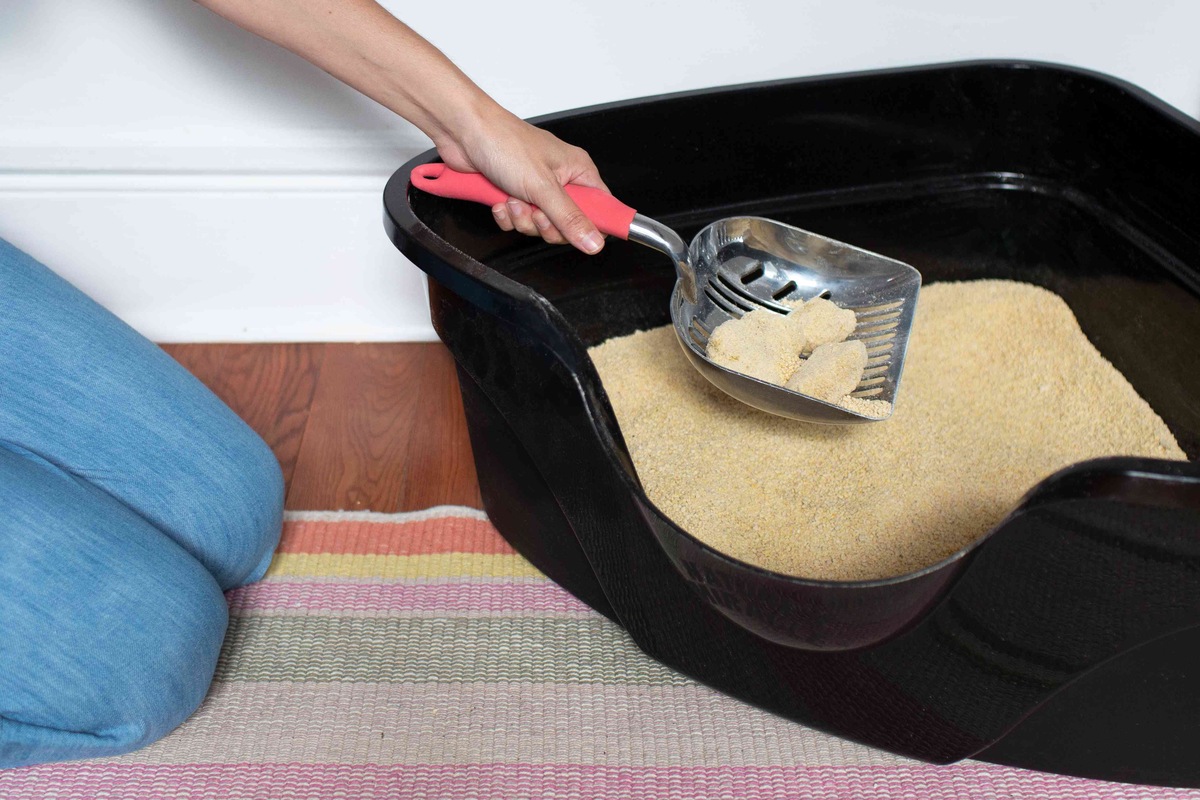
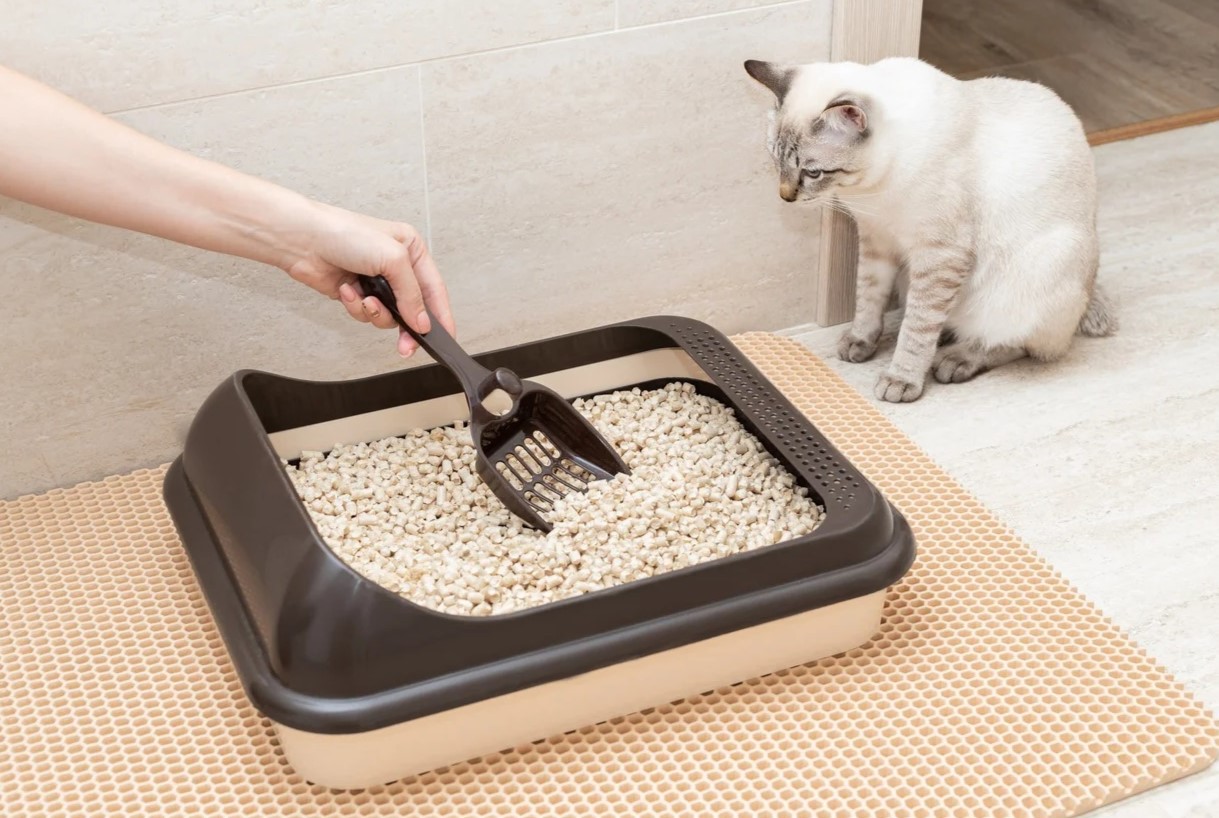

0 thoughts on “How To Dog-Proof A Litter Box”